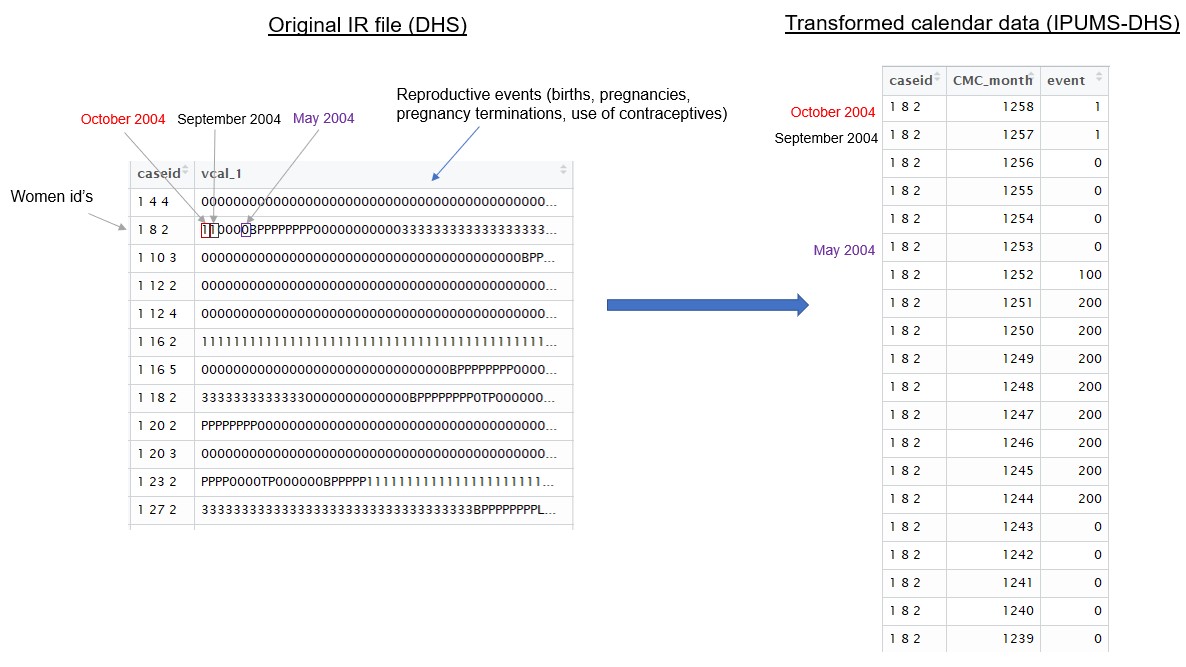Transformed Calendar Data by IPUMS DHS
To analyze the original DHS calendar data, a researcher neds to manipulate or transform the data strings. The DHS Contraceptive Calendar Tutorial describes three ways of handling the string calendar data: 1) string parsing of the data; 2) restructuring the data into a file of single months; and 3) creating event files.
IPUMS DHS uses the second approach of restructuring the data into units representing woman-months of exposure. These woman-months are available as a unit of analysis in IPUMS DHS, with the characteristics of the associated woman (e.g., her level of education) along with the specific information collected and summarized for the calendar data. This conversion of the calendar data simplifies analysis of these valuable but underused longitudinal data.
Below, the image on the left shows the beginning of some original calendar data strings. Each string relates to a different woman, as shown by the women id's variable in the far left column. Each cell within the string holds data on the reproductive event (birth, pregnancy, pregnancy termination, or contraceptive use) that occurred within sequential months, starting with the most recent (last) month. For the woman with id 182, for example, the first cell (with a value of "1") represents October 2004; the second cell (with a value of "1" represents September 2004; the sixth cell (with a value of "0") represents May 2004; and the cells directly following (a single B followed by eight P's) represent April 2004 through August 2003. According to DHS PHase VII standard codes, the woman used the Pill for the final two months, preceded by four months of using no method, preceded by a birth and 8 months of pregnancy.
The image on the right shows the transformed calendar data created by IPUMS DHS staff, for the same woman with id 182. Here, each month of exposure (starting with the latest) represents a row. The second column documents the date of the month in century months. The third column shows the same events in each month as described above. However, string characters of "B" for birth and "P" for pregnancy are recoded into numeric values of "100" and "200" respectively, for easier manipulation.

Breaking up one string per woman into woman-months makes it easier and more intuitive to follow the history of the woman's reproductive health. To take advantage of the richness of the calendar data, after transforming the original strings into woman-months, IPUMS DHS staff also created a number of summary variables based on the transformed calendar data.




